- Call us: 01444 237070
- Contact Us
- Stores
- Sign In / Register
-
- Back
- Used Cameras
- Used Accessories
- Used Lenses
- Used Video
- Used Film Equipment
- Used Stock Alert
- Used Blank Test
- Sell or Part Exchange
- Used Clearance
- Recently Added Used Equipment
- Park Picks
- All Used Black Friday Deals
- Faulty
- Trade-In
- Blog
- New in
- Call us
- Contact us
- Stores
- Sign in
- Categories
- Tips & Inspiration
- Reviews
- News
- Events
- Features
- Buying Guides
- Competitions
Best Camera for a Wildlife Photography Beginner
Wildlife photography is a genre that captures photographers regardless of demographic. It’s seen an uptick in popularity in recent years, partly due to the emergence of mirrorless cameras. It’s a challenging endeavour, and the tools that modern digital cameras provide have made the pastime more accessible than ever, especially with a growing number of younger photographers recognising the skill needed to take stunning wildlife photos.
As with all genres, the best way to start is to ensure your equipment is perfect for you. Purchasing a great camera is a crucial step in pursuing any photography goals, and with so many great cameras for beginners on the market, those looking to get started are spoilt for choice.
We’ve put together this guide to discuss the best camera for wildlife photography for beginners, highlight novel technologies designed with nature in mind, and ultimately help you find the perfect companion to start your journey with!
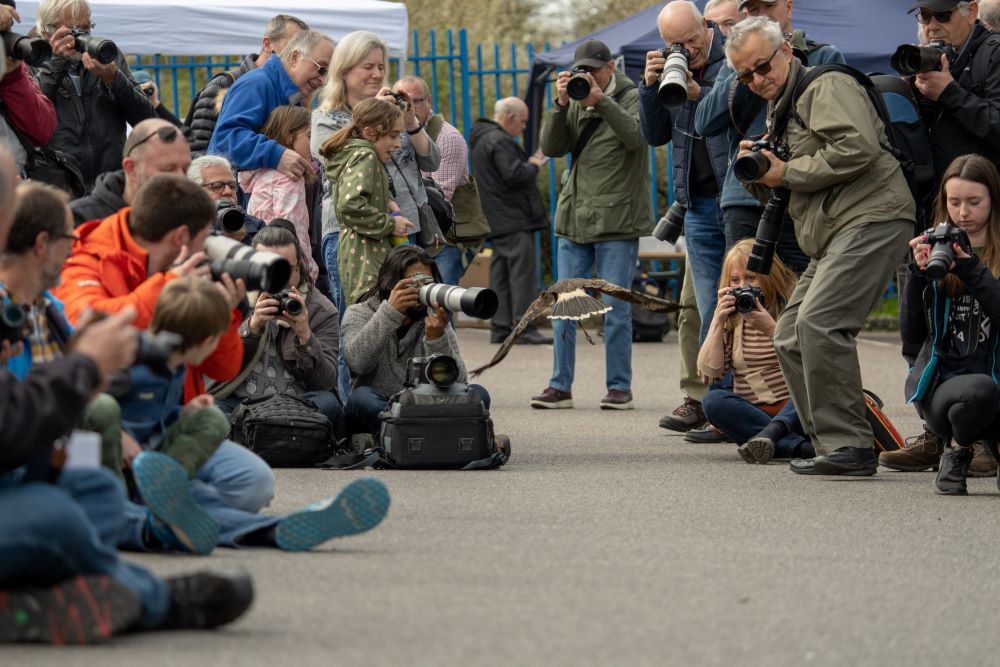
A shot from Park Cameras’ biannual Wildlife Day event, taking place again in September 2024.
What makes the best camera for wildlife photography?
To find the best camera for wildlife photography, it’s up to you to decide the factors that matter most. However, the genre tailors itself towards certain features found in digital cameras, some of which are make-or-break.
Below, we’ve listed the features that make a real difference to your wildlife photography – some are universal, some are more specific, and all will help you out!
- Image Quality: An undeniable advantage across the board. Before anything else, sharp, stunning images are the crucial element of a digital camera. Luckily, most modern camera sensors have the resolution necessary to produce breathtaking photos regardless of sensor size, putting the responsibility for quality in the hands of the photographer.
- Fast, Reliable Autofocus: A quick autofocus system with a high hit rate is essential for wildlife photography. More often than not, your subjects will not be still, so when choosing a camera, you should emphasise autofocus speed and a variety of subject detection modes.
- Continuous Shooting Speed: Another factor relating to fast-moving subjects. It’s improbable that you’ll nail a shot of a moving subject in one take, so having the tools to take dozens of frames per second enables you to become much more consistent with your wildlife photography.
- Weather Sealing: Shooting wildlife requires you to be outdoors, where anything can happen! Having a camera and lens protected from the elements gives you peace of mind wherever you’re shooting from.
- Image Stabilisation: Many digital cameras have stabilisation features built into the body, or optically through the lens you’re using. It reduces reliance on a tripod, allowing you to move freely and compose for subjects considerably faster.
- Portability and Design: Often, the long-range lenses loved by wildlife photographers are remarkably bulky, and as a result of being outdoors, that weight will inevitably need carrying around. Optimising for a more lightweight system will streamline your wildlife photography experience.
- Battery Life: This isn’t a dealbreaker, but being able to get the most out of your batteries means you’ll be much less likely to miss important shots and spend more time out in the moment photographing wildlife.
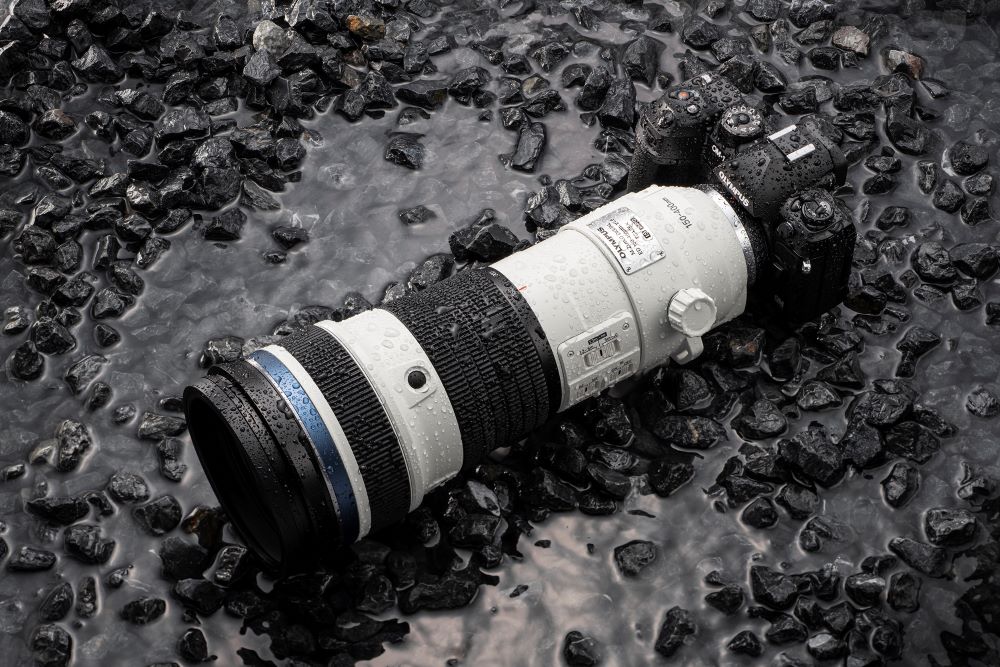
APS-C Cameras for Wildlife Photography
APS-C cameras, known more colloquially as crop sensor cameras, are hugely popular among beginners, enthusiasts, and notably wildlife photographers. As for all sensor sizes, using a crop sensor camera brings several traits that make the format unique and appealing.
A cropped sensor refers to any sensor size smaller than a full frame. This change brings several important differences – APS-C cameras are compact, portable and less expensive than full-frame cameras. Despite the change in price and size, they still go toe-to-toe with their 35mm counterparts in image quality and performance, with top-of-the-line crop sensor cameras having upwards of 30MP sensors.
To those unfamiliar with the science behind digital cameras, using a crop sensor can have some unexpected advantages, too. The sensor’s reduced size introduces what’s known as a crop factor – that is, each lens you use gives a longer effective focal length as a factor of the size reduction. For most cameras, this will be a 1.5x longer focal length on your lenses, and since Canon APS-C uses an even smaller format, its cameras have a 1.6x multiplier.
With a balance of image quality, exceptional portability, additional range, and comfortable price points, you may have understood why APS-C cameras are perfect for wildlife photography beginners! Below, we’ve listed the cameras that take advantage of a cropped sensor and allow you to get started with wildlife photography correctly.
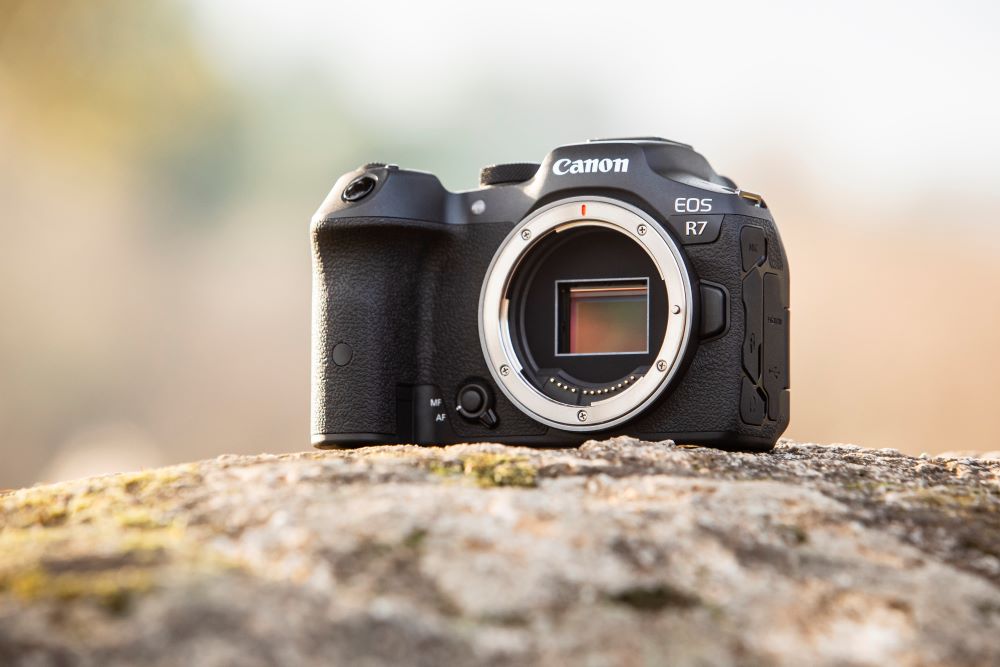
EOS R10 - best affordable camera for wildlife photography
The Canon EOS R10 outdoes itself as an entry-level APS-C camera. While it misses out on a few wildlife photography comforts like weather sealing and image stabilisation, its unexpectedly brilliant specs make it perfect for any budding wildlife photographer looking to learn the ropes. The brand has excelled for a while with pro-level models like the Canon EOS R5 and EOS R3, but for getting started, this is without a doubt the best Canon camera for wildlife photography.
As a tool, it’s blisteringly quick. The ultra-fast DIGIC X processor works parallel with Dual Pixel AF II, enabling sharp animal subject detection. By processing RAW files rapidly, the body supports up to 23fps shooting with the electronic shutter – if you don’t want to compromise your mechanical shutter, 15fps is more than enough.
Its compact weight of 429g with a card and battery gives no hints towards its 24.2MP APS-C sensor, capable of professional stills. In addition, its support for Canon RF-S lenses opens the door to an abundance of handholdable APS-C lenses with outrageous range.
The best wildlife photography lens kit is undoubtedly the Canon EOS R10 w/ Canon RF-S 18-150mm IS lens kit, which circumvents the lack of IBIS with an optically stabilised telephoto zoom with a 240mm equivalent maximum focal range. This combination is perfect to get started with a versatile beginner lens, making it arguably the best affordable camera for wildlife photography.

Sony A6700 – best lightweight camera
The Sony A6700 is Sony’s current APS-C flagship. By extension, it’s Sony’s most lightweight flagship and has a design built around portability. Surprisingly, however, it holds its own when paired with some of Sony’s heaviest lenses. Professional wildlife photographer Alexandra Surkova was one of the first to test the camera on release and remarked on its compatibility with Sony E-Mount lenses.
Not only is the camera popular as Sony’s sole APS-C flagship, but it has also won high praise for its AI-powered autofocus. The new system incorporated into the A6700 makes for a far stronger hit rate than previous generations, which is essential when tracking fast-moving subjects. It enables new subject detection modes dedicated to tracking animals, birds in flight, and even insects!
Notably, the Sony A6700 lacks a prism-style viewfinder. This gives it a rectangular shape which is exceptionally compact. Since wildlife photography rewards portability, this wildlife photography camera shines when taken on long treks.
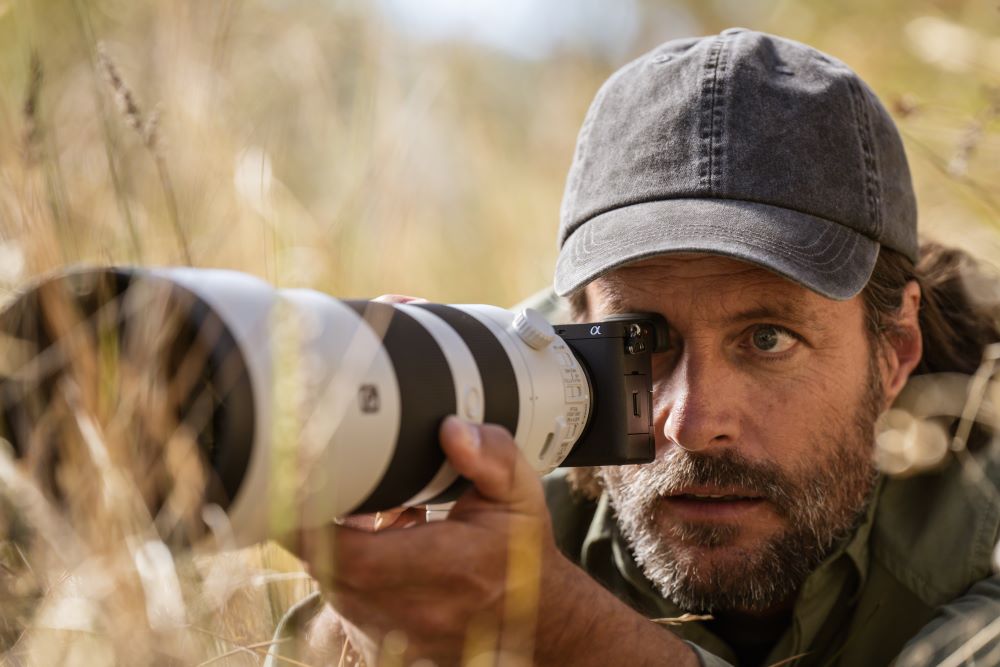
Shooting with a crop sensor camera enables focal lengths that are unthinkable on a full-frame camera for a beginner. For beginners, a dedicated APS-C lens like the Sony E 70-350mm F4.5-6.3 G OSS provides a maximum reach equivalent to 525mm, while remaining compact and relatively inexpensive.
Why is Micro Four Thirds good for wildlife?
Micro Four-Thirds is a unique format. It’s by far the smallest sensor size commonly found in interchangeable lens cameras, meaning the gear required to shoot with it is notably portable. Using powerful MFT lenses feels incredible as, compared to full-frame, it’s unimaginably light.
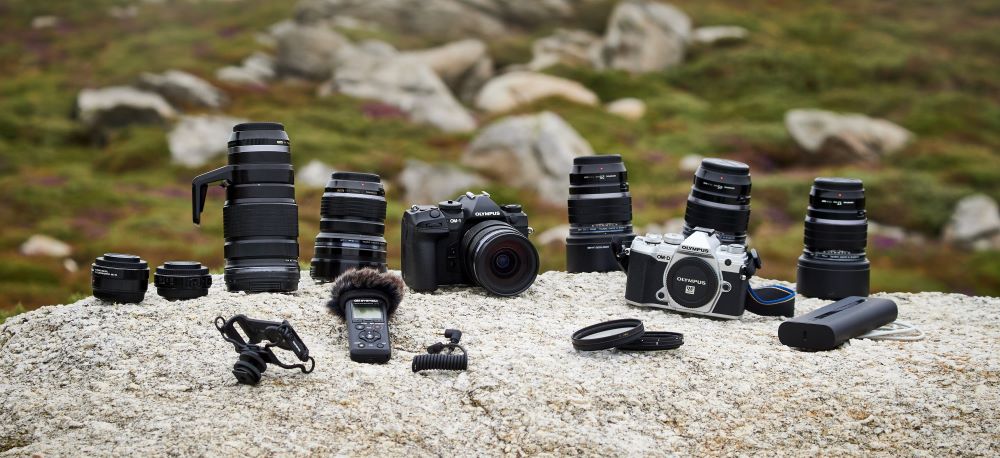
For nature photography, this adds a huge physical advantage. When you consider that most wildlife photographers prefer to shoot handheld, this also makes the format stand out as MFT gear is notably smaller and lighter. In addition, the sensor being incredibly small provides more room for in-body image stabilisation.
OM System OM-5 – best micro-four-thirds camera for beginners
The OM System OM-5 takes a lot of notes out of OM System’s current flagship, the OM-1 Mark II, making it one of the best micro four-thirds cameras for beginners. Both of these cameras are IP53 rated or better, being the only two mirrorless cameras on the market with a designated IP rating. Therefore, it’s arguable that the OM-5 leads all of its contemporaries as a weather-sealed, mirrorless beginner camera.
It’s also a top choice when it comes to performance. The 20MP sensor has the same resolving power as the OM-1 Mark II, which provides beautiful stills. Its autofocus is also surprisingly fast, with effective subject detection modes and 121 points covering the entire frame. With its electronic shutter, it can shoot at 10fps with continuous autofocus and 30fps with a single point.
Beyond its weather sealing, its image stabilisation offers an even greater quality of life with up to an outrageous 7.5 stops of image stabilisation. Pairing this with the OM-5’s ultra-low ISO capabilities gives users a great deal of control over their exposure.
While the OM-5 has no lens kits dedicated towards wildlife, its lenses certainly are. The 2x crop factor of Micro Four-Thirds means beginners can get started at brilliant ranges with lenses like the inexpensive OM-System Digital ED 40-150mm F/4-5.6 zoom lens. As an added benefit of Micro Four-Thirds, lenses from Panasonic, Samyang and more can be paired with the system.
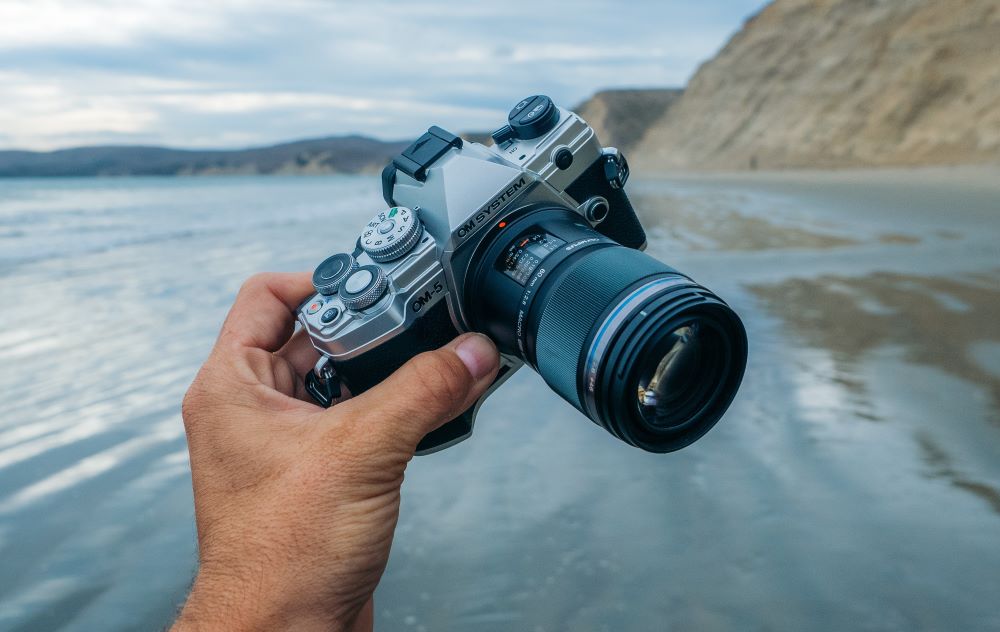
Nikon Coolpix P950 – best bridge camera
If budget is a concern of yours, and you’re simply looking for enough range to shoot wildlife, perhaps a bridge camera could suit your needs. They take the fuss out of interchangeable lens photography by incorporating an all-in-one fixed lens, bridging the gap between compact digital cameras and more traditionally designed cameras.
For wildlife enthusiasts, the Nikon Coolpix P950 is a compelling choice and quite a renegade one at that. It features an absurd 83x optical zoom (24-2000mm) and features a 16MP 1/2.3” sensor. Optical Vibration Reduction is built in, and image processing is surprisingly fast.
While it would theoretically be a better choice to use an interchangeable lens camera, you’ll be spending an outrageous amount of money on lenses to achieve the same range, which will be incredibly heavy, too. Furthermore, it’ll require changing lenses, which for some just isn’t worth the fuss – making a bridge camera like the Coolpix P950 incredibly worthwhile.
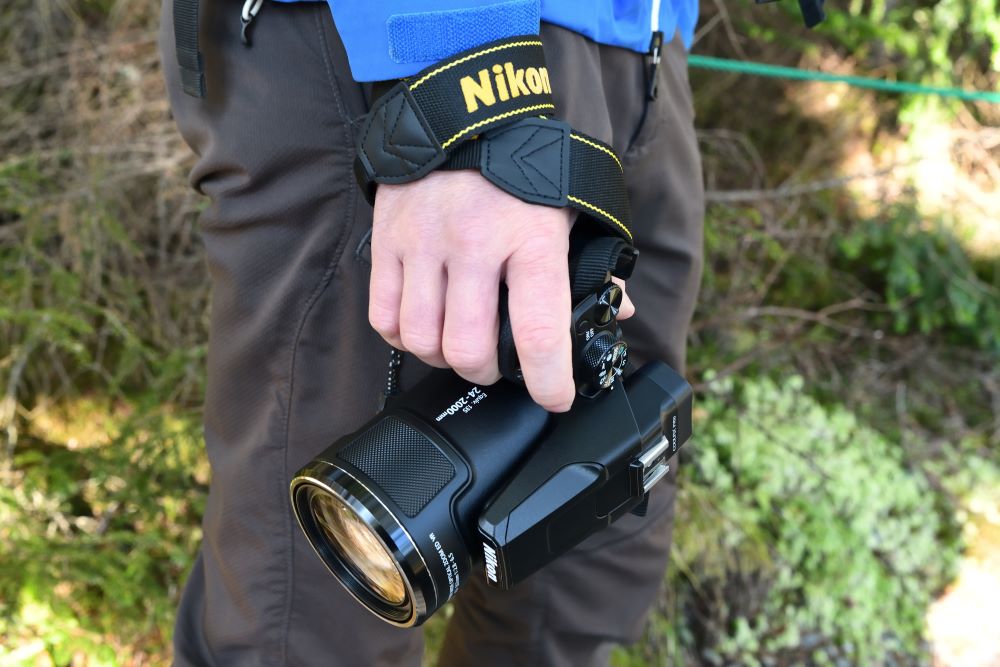
Other equipment
As a beginner, regardless of the camera you choose, it’s difficult to extend the reach of your limited range of lenses without investing a large amount of money. Despite this, there’s a cost-effective solution, which is to add a teleconverter to your lens. These act as magnifying glasses which are mounted between your camera and the lens, and can increase the range of virtually any lens in your kit.
In general, all camera manufacturers produce two standard models, typically 1.4x and 2x. They do affect performance slightly – for instance, using a teleconverter decreases the effective maximum aperture of your lens. However, if reach is what you’re looking for, then they’re the simplest way to achieve it.
Other wildlife photography mainstays like tripods, bags, filters and rain covers are hugely useful during shoots. As you branch out from your beginner status, you’ll have a comprehensive wildlife photography kit before you know it!
Park Cameras is a leading British wildlife photography provider – we have one of the most comprehensive catalogues of products for all kinds of photographers nationwide. Feel free to read our selection of buying guides on camera equipment for wildlife and beyond, and discover our range of exclusive photography offers today.
Share this post:
By Thom Pyle on 10/09/2024

Trade in your old equipment
Fast and easy trade in service ensures your old gear is collected efficiently and you are paid quickly! It's very simple to trade in your unwanted photography gear. Just head over to our dedicated Sell or Part Exchange page, fill out the details, and we'll get back to you with an offer for your old gear. Take the cash, or put it towards the cost of your new gear. It's up to you! Find out more
sign up to the newsletter
Keep up to date on the latest photography news, events and offers. Sign up now